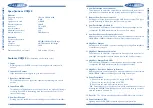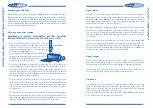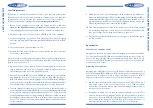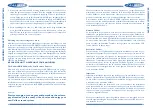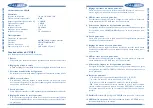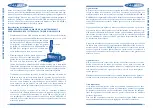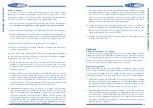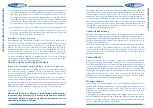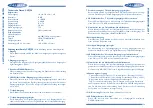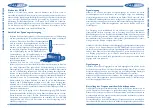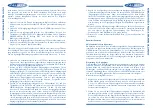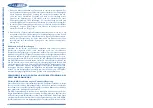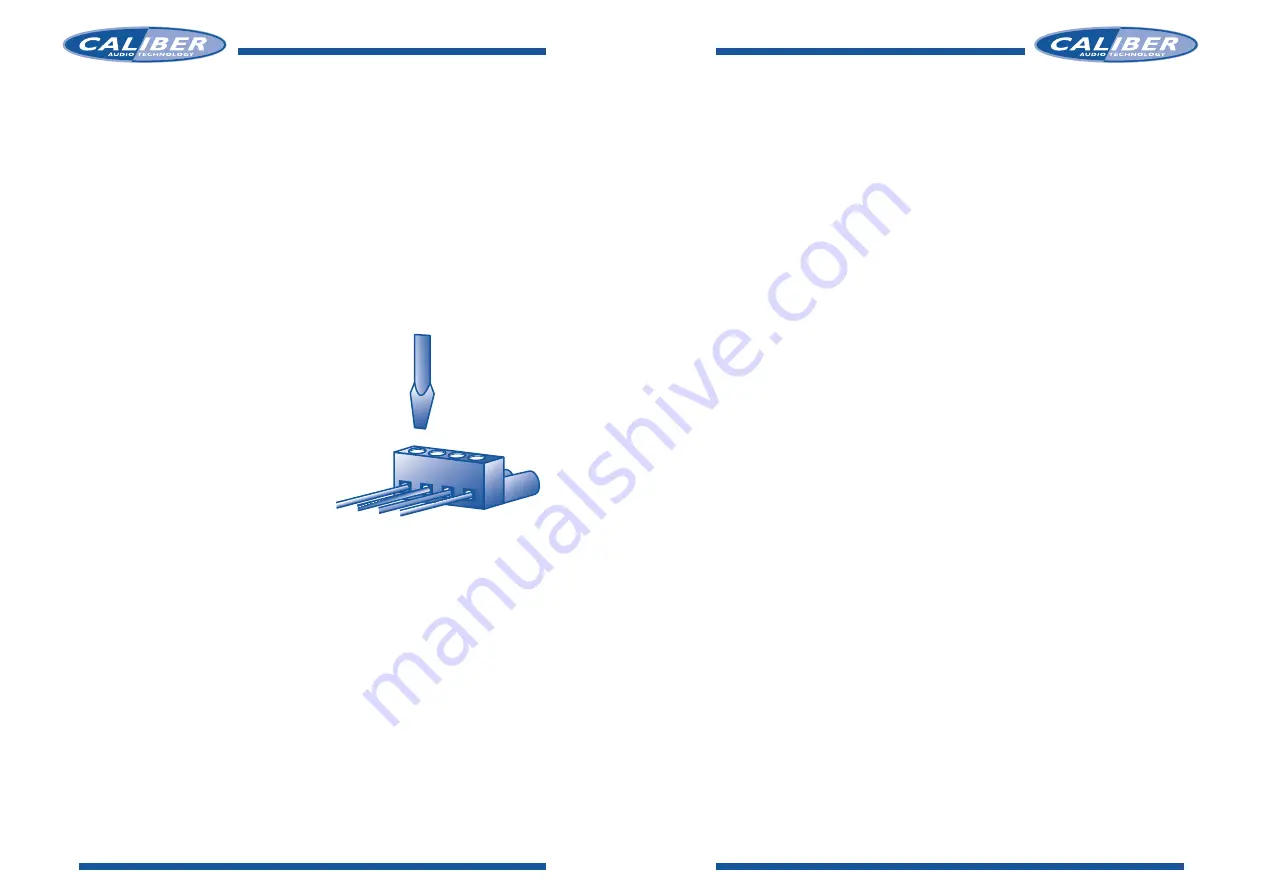
Signal input
The next to connect is your signal input. Choose the correct length and style of
RCA patch cables for your needs. Better RCA’s, such as the ones from the
Caliber CL 600 and CL 800 Get Connected Series, have gold-plated connectors
and multiple layers of shielding for better noise rejection. (Consult your official
Caliber dealer about these cables and RCA’s).
Be extra careful when running your RCA patch cables. Car environments are
notorious for poorly insulated wires. This means that hiss, engine noise and fan
noise can easily be picked up trough RCA cables, if ran incorrectly. As a precau-
tion, avoid placing your RCA’s near large wire looms and electronic fans when-
ever possible.
Connect the patch cables to the RCA output of your source unit. Run the RCA
cables to the location of the CXQ20, and connect them to the input RCA con-
nectors of the CXQ20. Be sure to connect the right channel to the right chan-
nel, and the left to the left. (In an audio system the right always has red RCA con-
nectors, and the left RCA connectors are white or black).
Signal output
Once you have connected the inputs, it is time to connect the outputs. Be care-
ful to connect, via RCA patch cables, the correct output to the correct amplifier.
Take good care in the balance of your signal (Right to right, and left to left).
Now that you have connected all your signal and power cables, it is time to con-
nect your battery again, and place the 1A fuse in the fuseholder.
Crossover
Determing the best crossoverpoints for your speakers is critical.The size of the
speakers, their powerhandling caracteristics and frequency range have to be
taken into consideration. Also the location of the speakers has to be evaluated
before the best crossoverpoints can be choosen.
A good ear, and proberbly some advice from your official Caliber dealer can help
you a lot when you are adjusting your crossovers.
5
SIGN
AL
INPUT
/
OUTPUT
4
MOUNTING
AND CONNECTING
Y
OUR CXQ20
Mounting your CXQ20
Find a steady, secure area to mount your CXQ20. Be sure it is accessible, but not in
an area where the equalizer sliders or any other adjustments may be bumped by
accident. Use the chassis of the CXQ20 as a template and mark the locations of the
mounting holes. Predrill the mounting holes using a 2,5 mm diameter drill bit and
use the screws supplied with your CXQ20 to fasten your equalizer/crossover. Make
sure the screws are tightened securely.
Getting your power started
REMEMBER TO ALWAYS DISCONNECT BATTERY GROUND
BEFORE WORKING ON A VEHICLE’S ELECTRICAL SYSTEM
• First, the
+
12V terminal is connected. The +12V ter-
minal is the first slot(A) from the left of the power-
connector. Use the same +12V source as you are
using for your amplifiers, in order to avoid picking up
noise due to voltage differences.
Don’t forget to add an inline fuseholder holding a
1A fuse at the beginning of the powercable for the
CXQ20.This to protect both your vehicle
and audiosystem in case of a short.
• Second, the -12V ground terminal must be connected. The -12V ground is the
second slot(B) from the left of the powerconnector.This cable has to be faste-
ned securely to the chassis of the vehicle with the same gauge cable as the posi-
tive cable (the same amount of power has to run through it). Ensure that all
paint, undercoating or any other insulation is removed from the area where you
want to make your ground connection to.
• Third to connect is your remote turn-on. The R (remote turn on) is the third
slot(C) from the left of the powerconnector. Many radio-cassette and CD-players
have an output terminal for connection of the Remote turn on. If you don’t have
such an output, a separate switch must be installed to control your remote
on/off functions.
• The last terminal to connect is your Delayed Remote output.The D/R (Delayed
Remote output is the first slot (D) from the right of your powerconnector.The
delayed remote output should be connected to all the amplifiers and crossovers
following the CXQ20, so they can be started with a 2 seconds delay.
+
-
D/R
R
A B C D
screwdriver


